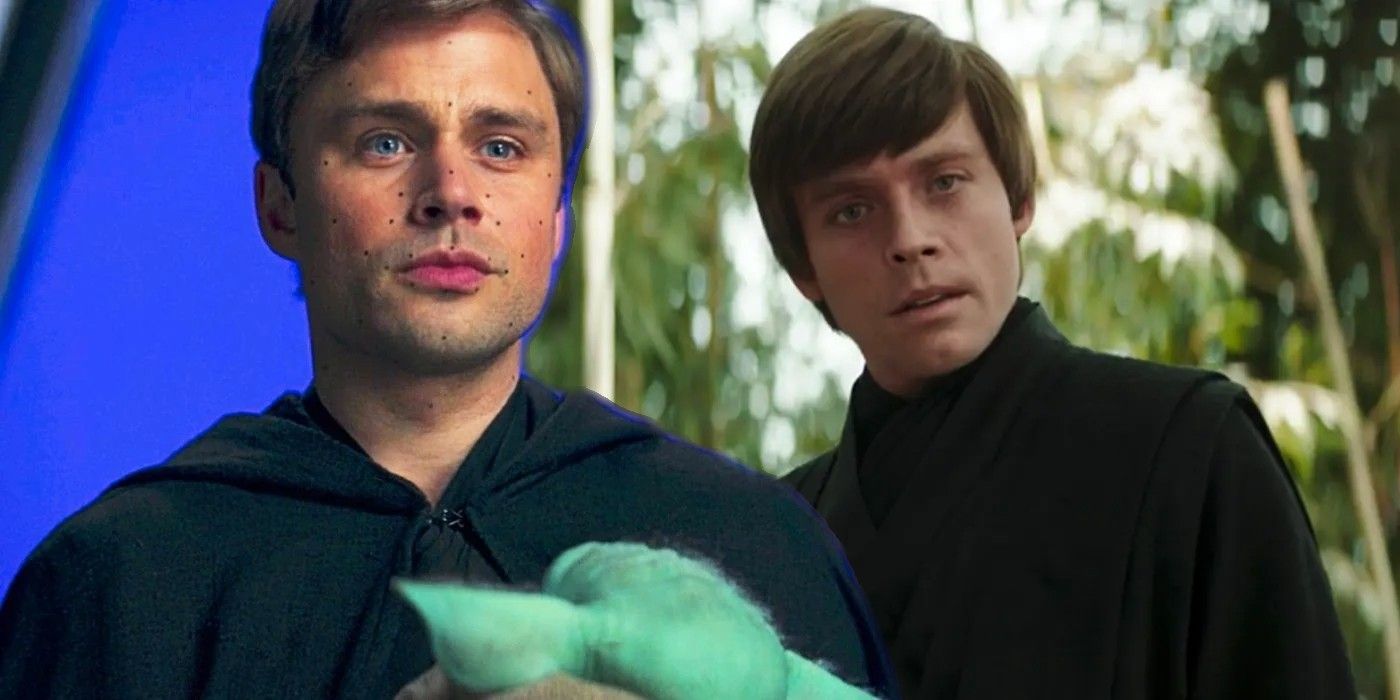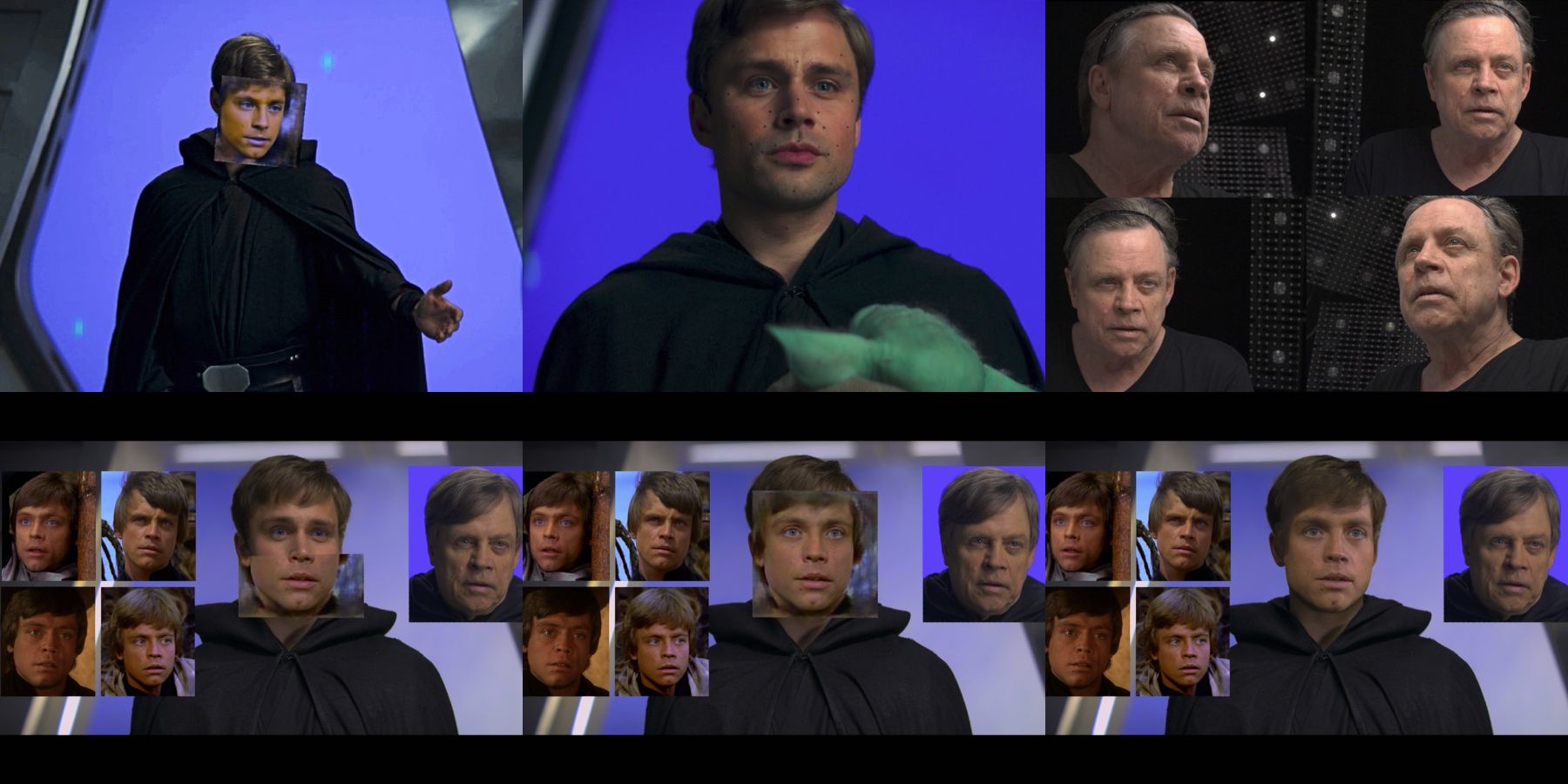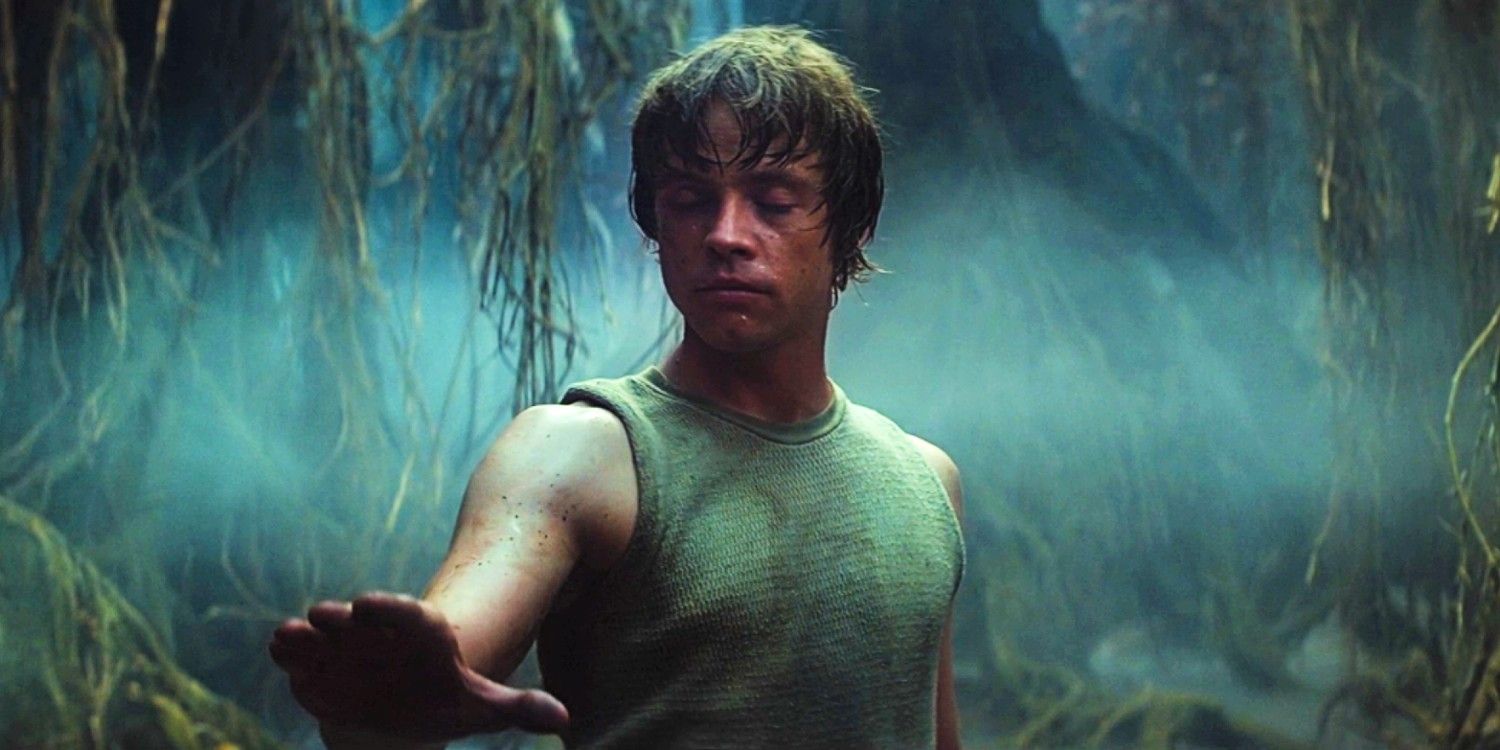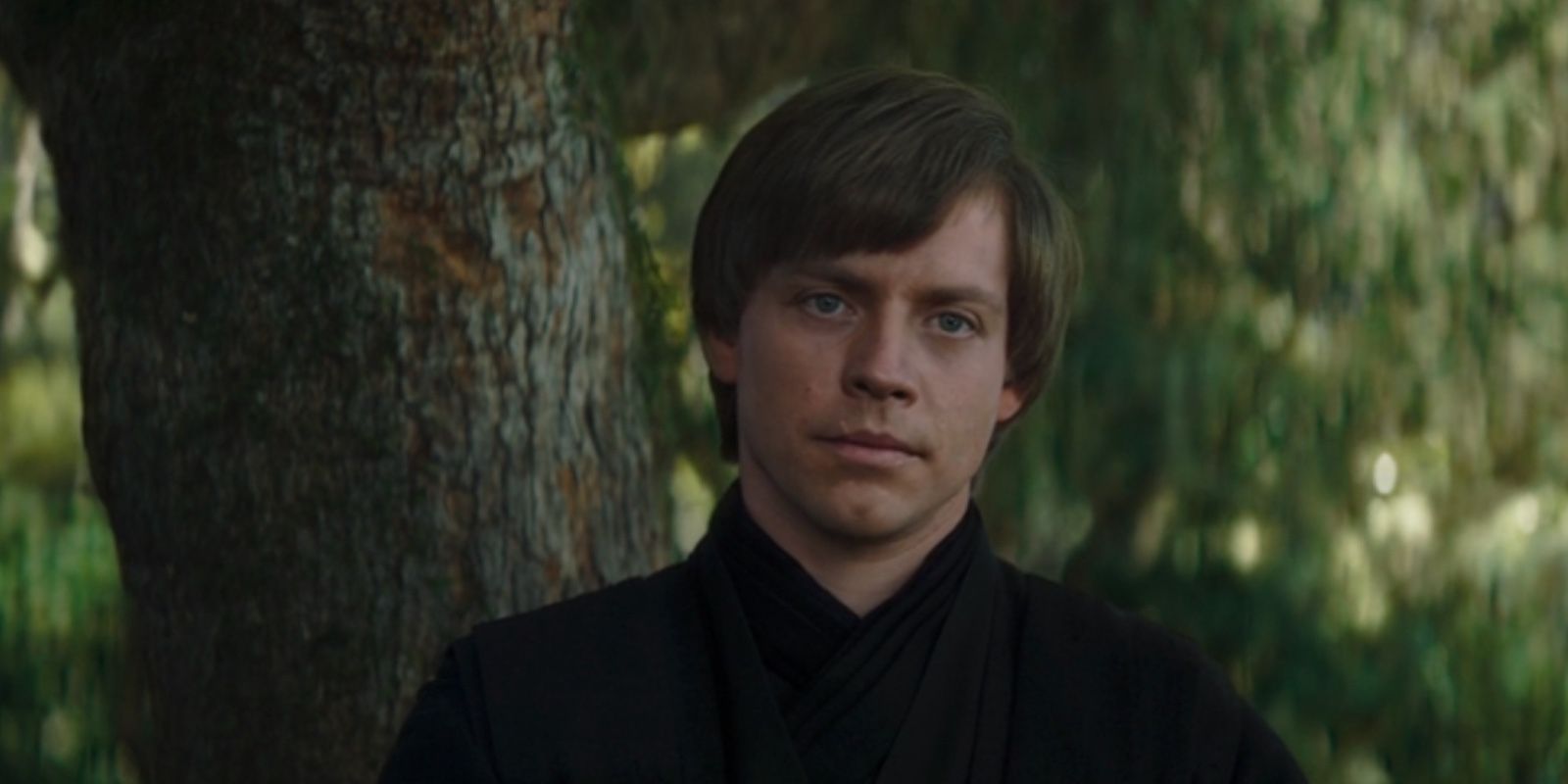Here’s a breakdown of how The Mandalorian and The Book of Boba Fett de-aged Mark Hamill as young Luke Skywalker using a process that's becoming more and more common in Hollywood. The Mandalorian wasn’t the first time Star Wars had used CGI and de-aging technology to bring back a character from the original trilogy - not even the first time for Hamill as Luke. In 2016’s Rogue One, Star Wars used a CGI mask for a stand-in actor to recreate Peter Cushing’s likeness as Grand Moff Tarkin and superimposed a young Carrie Fisher’s face as Princess Leia with images from Star Wars: A New Hope. Additionally, Star Wars: The Last Jedi used old footage from the original Star Wars trilogy to make young versions of Luke and Leia in a short flashback scene. The CGI Luke Skywalker was featured most recently in The Book of Boba Fett, while he was training Grogu.
The de-aging technology was used in The Book of Boba Fett to bring the young Luke Skywalker back to the screen, prompting many to wonder if Star Wars just killed the uncanny valley. Grogu required Jedi training, and Mark Hamill's Luke Skywalker stepped up to the plate. Until he gave Grogu the ultimatum of either taking the Jedi's path or that of the Mandalorian, stating that there was no in-between. There were vast improvements between The Mandalorian's and The Book of Boba Fett's de-aged Luke. But the real kicker is that Mark Hamill wasn't used at all. Not only was his appearance taken over by AI, but his voice was too.
The Mandalorian's CGI Luke Skywalker wasn't initially well-received. So for The Book of Boba Fett, Lucasfilm hired a YouTube deepfaker to bring AI Luke to life. Reactions to the Boba Fett Luke were mixed, but the overall consensus was that it was a lot smoother than The Mandalorian's. Here's Luke Skywalker's de-aging process for The Mandalorian and The Book of Boba Fett explained, and the implications that the deepfake could have for the future of cinema.
How Star Wars Deaged Mark Hamill For Luke Skywalker’s Mandalorian Cameo And Beyond
The Mandalorian’s and Book of Boba Fett's visual effects team implemented several techniques, including deepfake technology, over scenes that were physically acted out by Mark Hamill himself and a younger lookalike actor. Instead of using CGI, The Mandalorian focused on deepfake, where the machine learning analyzed an enormous amount of images coming from the original Star Wars trilogy movies and interviews of Mark Hamill, pulling from the vast existing footage of Luke Skywalker that corresponds to his post-Return of the Jedi age. The Mandalorian creator Jon Favreau explained in Disney’s Gallery: The Mandalorian documentary that the deepfake analysis of Mark Hamill's footage created “a library of expressions, faces, looks, and lighting scenarios'' which the AI superimposed over corresponding expressions by the scene’s physical performer. When the images from the deepfake AI are matched atop the performer’s face, it becomes so realistically mirrored that there’s an illusion of there really being a young Luke Skywalker.
Not only was deepfake used, but The Mandalorian and The Book of Boba Fett also combined the technology with the de-aging effects that were edited atop Mark Hamill’s physical performance in the scenes. For the season 2 finale, Luke Skywalker was physically played by two actors: Mark Hamill and Max Lloyd-Jones, a younger actor who looked exactly like Hamill at that age. Both actors alternated performing every scene where they would try to go back and match each other’s mannerisms. In this way, Lloyd-Jones learned to physically become a young version of Mark Hamill rather than Luke Skywalker, where Hamill’s face would be imposed atop his younger physique.
After Hamill finished performing the scene on the set of the ship to drive what Lloyd-Jones' performance would look like, he would be put in what’s called “the Egg,” a lighting rig that recreates his facial expressions with alternate lighting and high-resolution textures. Doing so allows more freedom and options in the editing process for the Deepfake to pull from alternate angles, positioning, and timing to better align with Lloyd-Jones’ Luke Skywalker performances. The Mandalorian’s shooting with Mark Hamill on-set happened over one day, meaning they had minimal time to redo scenes and immediately move him over to the Egg for facial lighting adjustments. In contrast, The Book of Boba Fett forewent using Mark Hamill at all, and instead opted for a mixture of a stand-in and footage from The Mandalorian. The final product of the intensive technological process paid off, with The Mandalorian season 2 finale's reveal of Mark Hamill as Luke Skywalker becoming a cultural sensation.
Where Else The Mark Hamill Deaging Technology Has Been Used
When approached to come back as a young Luke Skywalker, Jon Favreau told Mark Hamill they would be using the same de-aging technology implemented in Marvel movies, making the outcome similar to Kurt Russell’s de-aging in Guardians of the Galaxy 2. Hamill originally thought Luke would return as a young Jedi being played by a more age-appropriate actor, which was the consensus among speculative fans who theorized that Star Wars would cast MCU actor Sebastian Stan, who bears an uncanny resemblance to young Hamill, as Luke in the series. The Mandalorian’s team decided it would only happen if Mark Hamill agreed to lend his likeness, which he gladly accepted after taking some time to assess his return as a needed “responsibility.”
Luke Skywalker’s Book Of Boba Fett CGI Is A Triumph With Terrifying Implications
The Book of Boba Fett's deepfake Luke Skywalker looks shockingly real — and that has potentially terrifying consequences for civilization. Star Wars has been on the cutting-edge of technology since the first trilogy, so the fear around where this technology could go has always been around. However, in the age of misinformation, the rise of the deepfake has some major implications for the world. This means that politicians, celebrities, and those of influence can potentially be copied and pasted into whatever someone else pleases. As evidenced by The Book of Boba Fett, not only can appearances be computer-generated with astounding realism, but so can voices. This leaves the door open to make whoever do whatever and say whatever a deepfaker could want.
It could also create problems in future cinematic endeavors. Hollywood has been riding the nostalgia train for a while, so the use of de-aging technology to cater to that isn't new. This could lead to more watered-down content that leans on the triumphs of the past to entertain the masses. While The Mandalorian and The Book of Boba Fett's de-aged Luke Skywalker works for the premise of the series, not even using Mark Hamill in the latter presents strange consequences for the future of AI technology in cinema.




